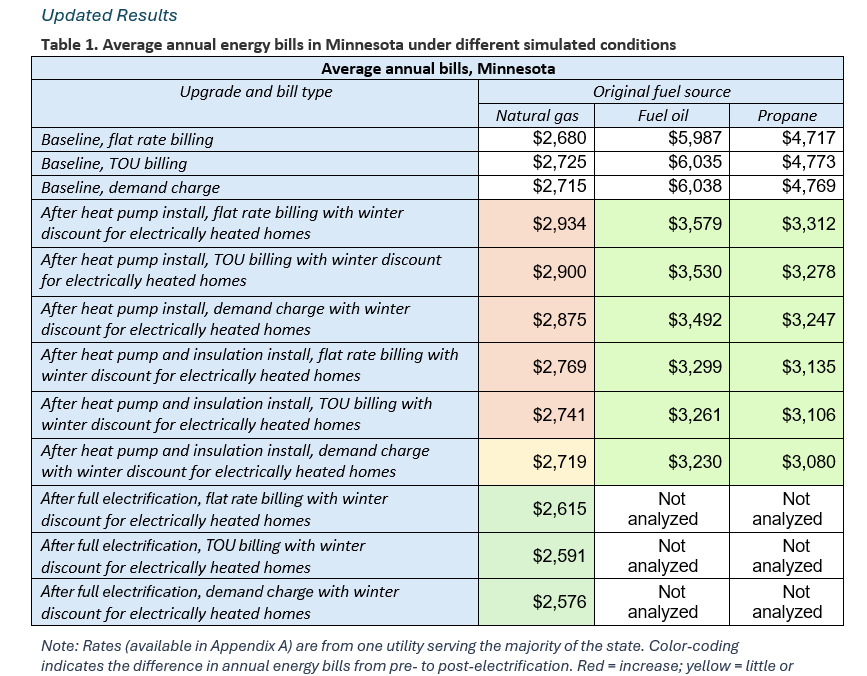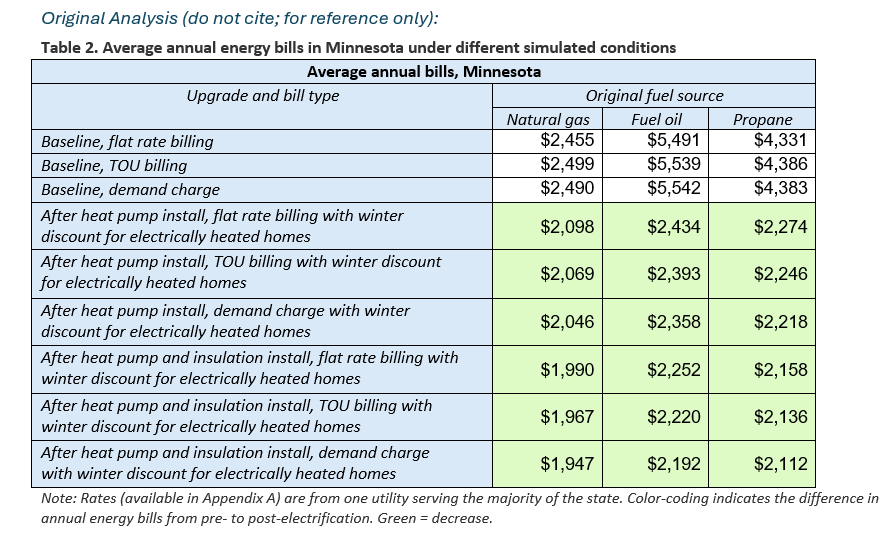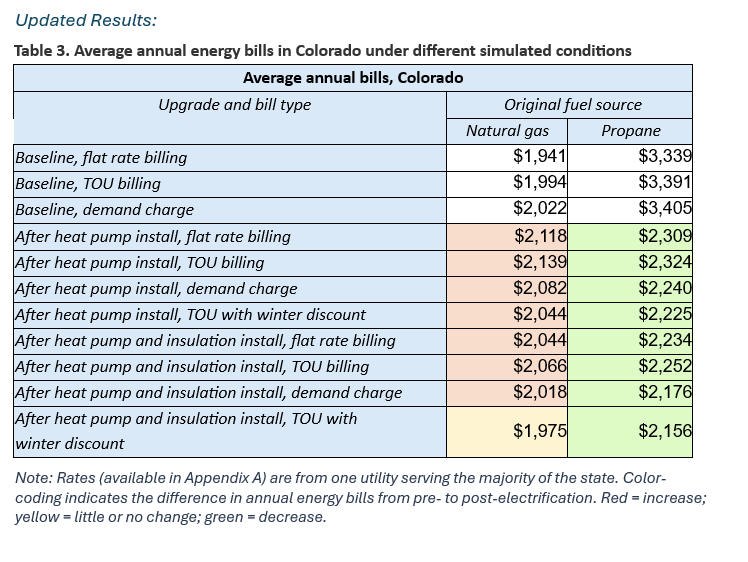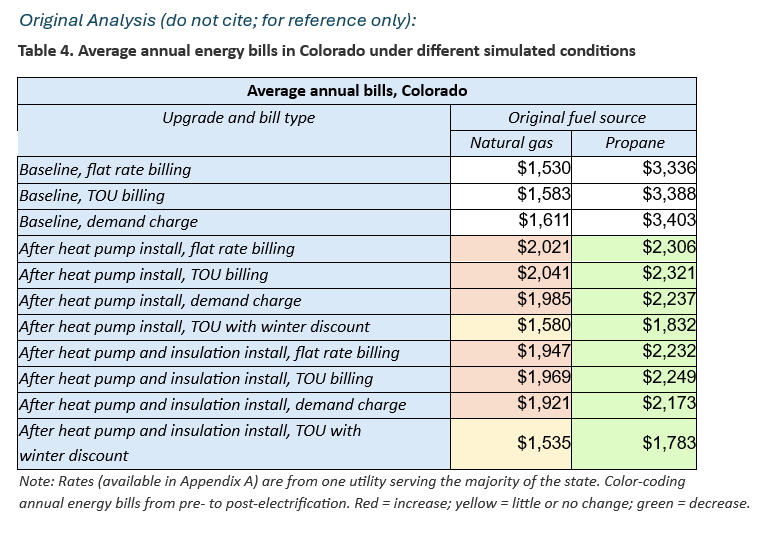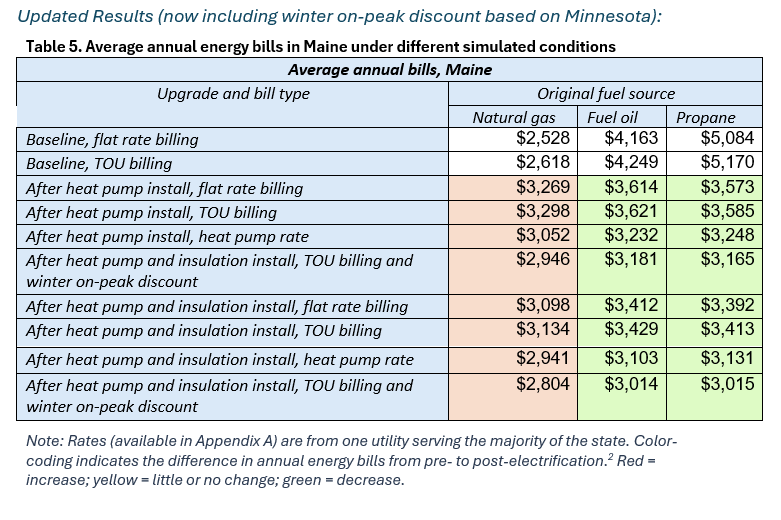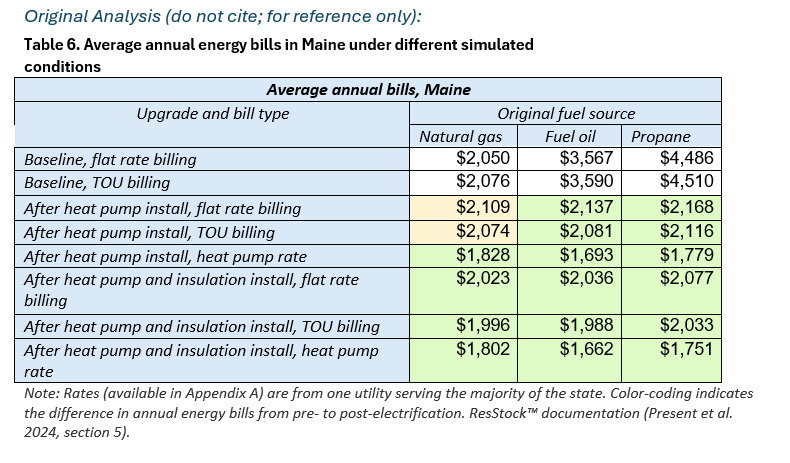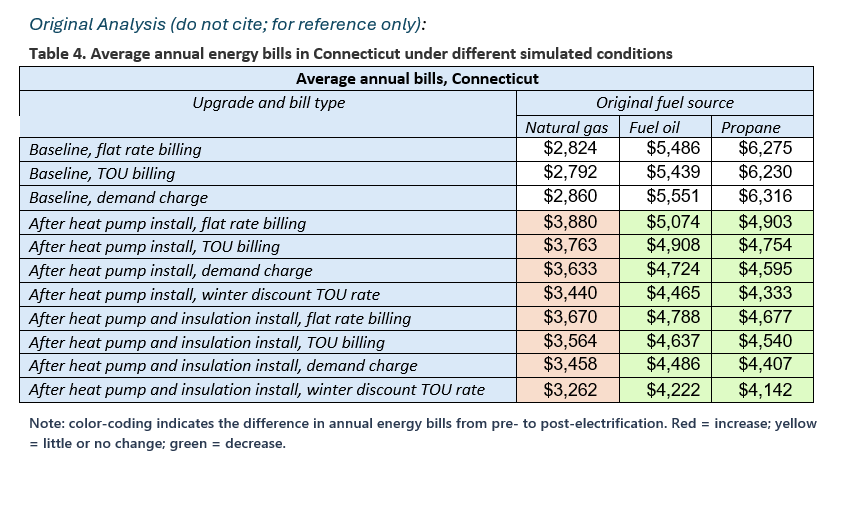ACEEE revised our recent home electrification report to include missing utility charges. The update alters how gas and electric bills would change when homes switch to heat pumps. Our conclusions about rate design to support heat pumps remain the same.
We learned that some of the utility rates analyzed in ACEEE’s recent report Electricity Rates That Keep Bills Down after Electrification of Home Heating were missing a fuel charge component. Therefore, the energy bill calculations were incorrect. The missing charges affected the results in all four states that ACEEE analyzed, though the results were mixed.
Once the fuel charge was included, electric rates increased significantly in Maine and Read the ReportMinnesota, making heat pumps less financially competitive with gas. In contrast, gas rates increased significantly in Colorado and Connecticut, making heat pumps more financially competitive with gas-fired heating. The increase in Minnesota electric rates reduced the effect of the winter electric heating discount we applied for the rate comparison in Minnesota and the other three states. Finally, we revised gas rates for non-gas-heating customers in Connecticut.
The updated analysis was needed because in some states the utility that sells gas or electricity to the customer buys it from another party—in which case they pass on the cost of the gas or other fuel to the customers as a separate item on the bill—but we left those charges out of our calculations. The charges can vary month by month and are not always specified on the utility’s rate sheet. There may also be further charges reflecting other costs, sometimes called “adjustments” or “riders.” We have reviewed the rates in further detail and checked the changes with several utility representatives to validate our process and help avoid further errors.
The report's overall conclusions are unchanged—existing seasonal heating rates (lower rates in winter) improve the economics of heat pumps, but not to the extent that we initially expected. Despite the benefits of heat pumps, the discounts currently offered are not sufficient for heat pumps to provide average cost savings in the four states with high electricity prices and cold climates that we analyzed. To improve the economics of heat pumps, heat pump-specific rates should include deeper winter discounts that take into account when heat pumps are operating and when they can provide benefit to the grid. Clean heat standards, removal of winter discounts on natural gas, and public investment in energy infrastructure are also important long-term solutions.
A description of our revisions follows as do the revised results for each state.
Details of Revisions
Fuel charges and other adders
The primary change was that we added fuel charges, other adjustments, and regulatory riders not included in the utility rate sheets that we referenced as our representative rates in each state.
To update this, we reviewed additional sources, including utility regulatory commission web pages, utility web pages, and the National Renewable Energy Laboratory’s U.S. Utility Rate Database.
We now have a more accurate view of the all-in rate for each state, though there were still a handful of charges that we were not able to incorporate due to analytical limitations; however, we expect the effects of these to be minor (e.g., local franchise fees are common in Minnesota, but they are applicable to both gas and electric users, so this should not affect the results).
Reduction in Winter Discount Rate
Throughout the paper, we originally discussed a 35% winter discount rate offered to electric heating households in Minnesota.
However, the discount does not apply to the fuel and other charges noted above, so once these are factored in, the effective discount decreases to 31%. We used this lower effective value when applying the discount in other states. (Utility commissions providing these discounts should increase them in the future to account for these additional charges while adhering to cost-of-service principles.)
Finally, the discount is only offered during peak hours (9 am to 9 pm Monday through Friday, excluding holidays) in Minnesota in winter; we had previously applied it around-the-clock in Colorado. To be consistent with how this discount is applied in Minnesota, we reduced its application in Colorado, resulting in less discount for heat pumps. Since heat pumps operate largely off-peak in winter, increasing load at times of low demand, these discounts should be applied around-the-clock.
Additional Revisions in Connecticut
In Connecticut, the cost of gas increased once the fuel charge and other adders were factored in, as above, which should have made switching to heat pumps more attractive. Also, upon further review, we reduced the flat electric rate slightly from $0.292/kWh to $0.288/kWh.
However, another factor increased costs slightly for homes switching to heat pumps. Connecticut gas utilities offer two gas rates—one for customers with gas heat and another for those without. Once households electrify their heat, they would have to switch to the higher, non-heating gas rate for their remaining gas use, which would increase their bills. Full electrification of the remaining loads could therefore be helpful for these households.
Updated Results
Minnesota
After whole-home electrification and building envelope improvements,[1] average energy bills decrease from $2,680 with natural gas heat to $2,591 under the winter discount time of use (TOU) rate. If the utility offered a winter discount demand-based rate, annual energy bills could drop further, to an average of $2,576. With only heat pump and insulation (no additional electrification), energy bills of homes under a winter discount demand-based rate are still similar to those of natural gas-heated homes ($2,719/year).
Colorado
In Colorado, adding the Minnesota-level winter discount and TOU rate allows homes installing a heat pump alongside envelope upgrades to see energy bills like those of natural gas-heated homes ($1,941/year for gas, versus $1,975/year for heat pump customers). The additional fuel charges we added to the gas bills were canceled out by the correction to our winter discount rate. As a result, the difference in bills between heat pumps and gas baseline stayed roughly the same as before our revisions.
Maine and Connecticut
In Maine and Connecticut, fuel oil and propane customers (representing a combined 41% of homes in Connecticut and 66% of homes in Maine in 2023) switching to a heat pump would see bills decrease. However, natural gas customers would see bills increase.
Maine
We added missing fuel charges to Maine’s electricity rates, and this caused the economics of heat pumps to be more challenging in the state. Thus, Maine was recategorized as a state similar to Connecticut, where deep infrastructure investment and policy are needed alongside rate changes to make the cost of operating heat pumps the same as or lower than natural gas heat. However, heat pumps already cost less to operate than fuel oil or propane.
Connecticut
Our analyses for Connecticut did not change very much. We added fuel charges to the gas bills, but this was canceled out by a revision in how electrically heated homes are charged for gas (homes without gas heating pay a higher rate for their remaining gas appliances, such as water heaters). As a result, whole-home electrification could be helpful in bringing down the bills and should be analyzed in the future.
[1] Including insulation, heat pump and heat pump water heater, ENEGY STAR electric dryer, and induction stove.

